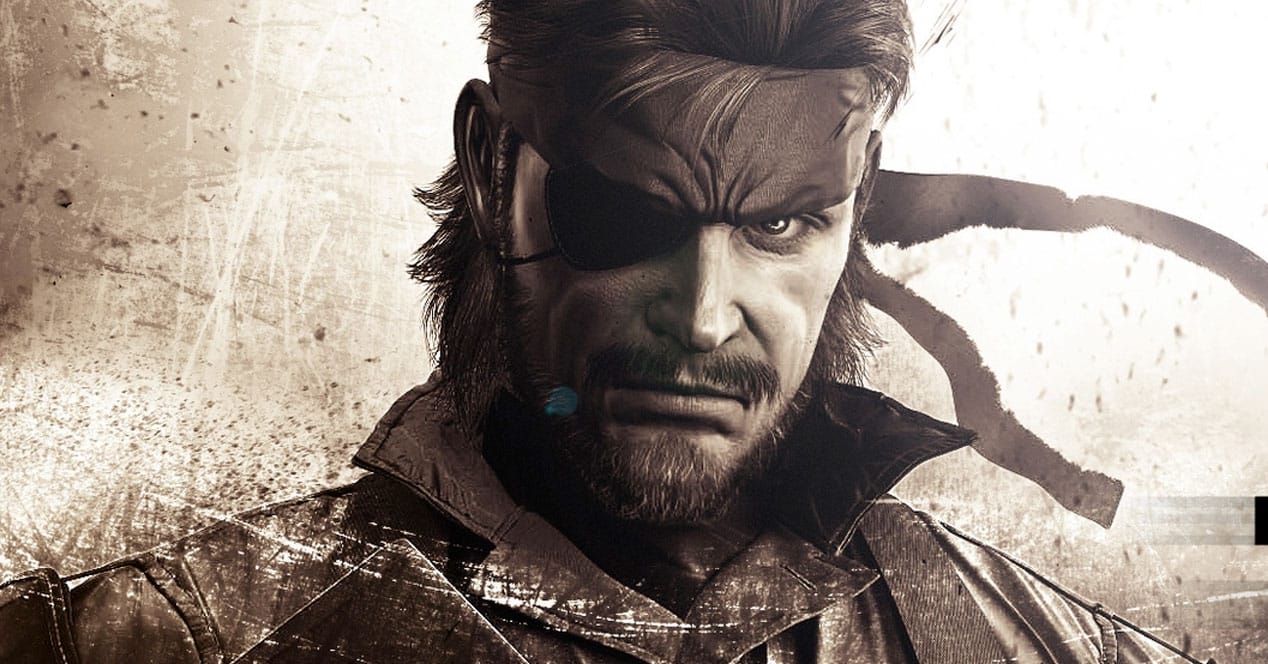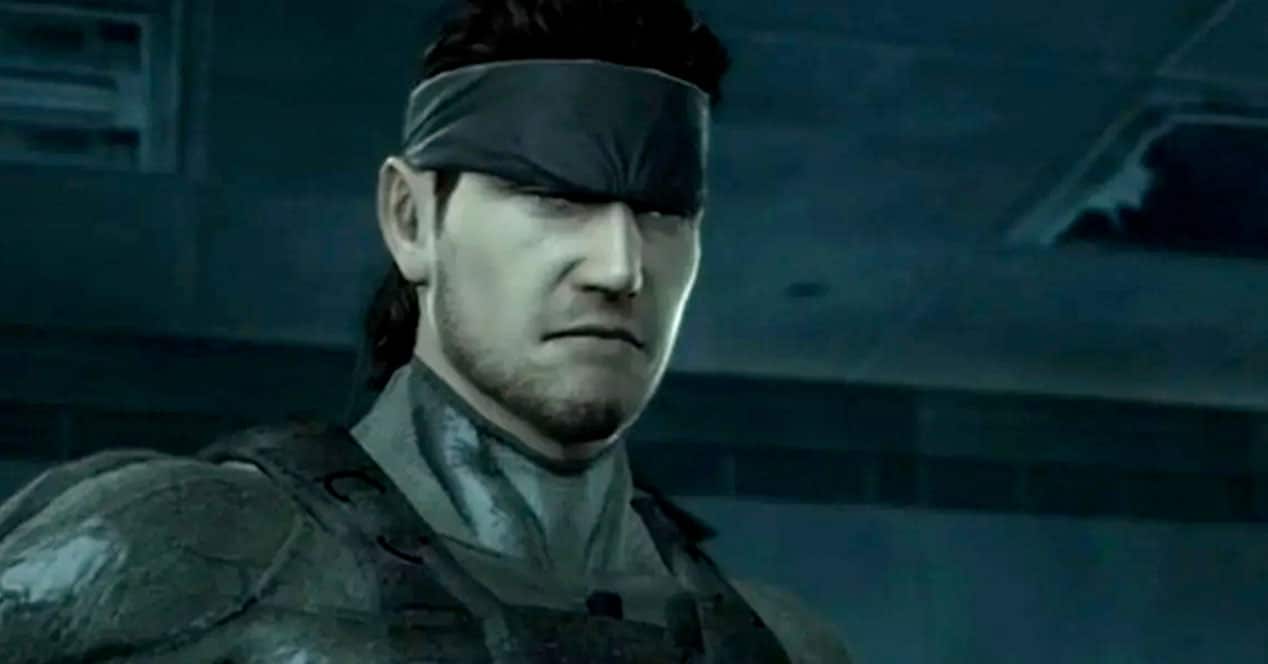
It is one of the best-known sagas in the history of video games. Japanese through and through and with the pedigree of one of the most successful companies in the early days of the industry, in addition to bearing the signature of those author programmers who turn each of his works into a planetary event. Indeed, we are talking about Metal Gear, from Konami and of course from the famous Hideo Kojima.

An 80's story
Before we get into the history of Metal Gear and its games we must understand the time in which its premiere takes place. The 80s are those of Ronald Reagan as President of the United States, of Pope John Paul II and of the determined fight of both against communism. That brought the Cold War to levels of relevance never seen before that were reflected in the video games or the movies that were shot in those years. That feeling of conflict between the two sides gave us characters who, in any of their forms, they fulfilled the mission of fighting against tyranny in the name of freedom, like Snake: John Rambo, played by Sylvester Stallone, or movies with muscular heroes like Command, Predator and the funny ones Delta Force which starred Arnold Schwarzenegger or Chuck Norris.
Product of that cinema that had its enemy and stage in the Soviets and the Cold War (War games, Red Dawn, etc.), we must frame the birth in 1987 of Metal Gear for MSX, a hero from head to toe who fought against the forces of a tyrannical evil, not so much Soviet, but with an air of what at that time was the pure representation of what someone later called the "axis of evil."
But before we get fully into the games, would you recognize the protagonists of the games?
The protagonists of the saga
The protagonists of Metal Gear Solid They are already icons in the history of videogames and if you are new you may as well get involved with each of them. To say that most use the name "Snake" but later There are differences between each of them., the time they have to live in and the enemies and armies they will have to fight. All these Snakes represent the different incarnations of a hero created to fight through time against everything and everyone.
Solid Snake

secret project product Les Enfants Terribles, is the most perfect soldier developed in the XNUMXth century and capable of achieving suicidal objectives such as infiltrating any enemy installation. His prestige has made him a living legend in the army.
Big Boss

Founder of FOX HOUND, Outer Heaven, Militaires Sans Frontières (MSF), Diamond Dogs or Zanzibar Land, is a powerful fighting force although over the years, and as he gets older, he ends up making some decisions that seem to go against his own curriculum. Even so, he is considered one of the best soldiers of the XNUMXth century.
Venom snake

We are before the protagonist of Metal Gear Solid V The Phantom Pain already as a commander of Diamond Dogs and whose mind led him to think that he was actually Big Boss. Really, his past has to do with an MSF doctor. Many of his war wounds (arm, face, and legs) were sustained trying to save Snake.
Raiden

He will be the savior of Solid Snake on several occasions and will star in games like Metal Gear Solid 2 Sons of Liberty. Despite his experience, his missions completed, and the scars sustained, he will end up dying and his body destroyed…whom they will replace with a cyborg who is, more or less, one of his best known reincarnations.
Metal Gear Main Saga
Sets Metal Gear many have come out but that are part of the main plot arc, only the ones that we tell you about below.
Metal Gear (1987)
The year is 1995 and the US government puts itself in the hands of FOX HOUND with a Big Boss that commands that elite force, although it will be Gray Fox that we see in this game that brings to the table some of the key features of the saga: stealth, infiltration and combat when there is no other choice.
Metal Gear 2: Solid Snake (1988)
This game begins with Solid Snake being retired and a scientist being kidnapped by the renegade nation Zanzibar. FOX HOUND returns to take action on the matter with Commander Campbell in command. The game was a sequel to the first, obviously due to the success that marked the beginning of the legend.
Metal Gear Solid (1999)
Eleven years after the last installment, Konami broke the rules and created one of the classic games most important in history. Metal Gear was a household name, but not as big as this game that takes us to the year 2005 and the glorious setting of Shadow Moses. FOX HOUND returns to make an appearance using a Solid Snake who must stop some terrorists who threaten to launch a nuclear missile.
Is it necessary to say something about this wonder? Basically got the idea from the original games, he applied a helping of 3D graphics, set everything with cinematographic scenes, an impressive dubbing in Spanish and the rest was the magic of a saga that is classic in the history of video games.
Metal Gear Solid 2: Sons of Liberty (2002)
Following the success of metalgearsolid, Konami had the entire gaming community eating out of his hand. The expectation for this game exceeded all known and broke absolute sales records. Solid Snake and Otacon found Philanthropy in 2007 and they investigate at that time if the Marines are building and transporting a Metal Gear RAY. Revolver Ocelot appears on the scene, sinking the freighter in which they carry this new weapon and our protagonist disappears. But that's just the beginning, because it will be Raiden who appears on behalf of FOX HOUND with the mission to stop the terrorist threat.
Metal Gear Solid 3: Snake Eater (2005)
The franchise takes a time jump from the year 2005 to 1964, at the height of the Cold War: Naked Snake is sent to Tselinoyarsk to rescue a Russian scientist., called Sokolov, and who has in his hands the Shagonod project, a devastating weapon that allows whoever possesses it to launch a nuclear attack from anywhere on the planet. This title managed to give the series a new direction and, above all, offer a much richer background that made the franchise even bigger.
Metal Gear Solid 4: Guns of the Patriots (2008)
Metal Gear Solid 4 makes the calendar run again and leaves behind the decade of the 60s of the 2014th century and transports us to XNUMX, moment in which the threat of some nanomachines appears capable of taking down targets in an extraordinarily precise and selective way. Here, we will meet a version of Solid Snake, especially aged and not very committed to the ideals he had in his youth, that he will have to kill Liquid Ocelot as quickly as possible.
Metal Gear Solid: Peace Walker (2010)
The clock takes us back to the 70s for a game that came first for PSP (although later it had HD versions for desktop consoles). Now MSF is fighting in South America, a place shaken by the growing influence of the Soviet orbit and the impact of the Cuban missile crisis. Big Boss will have to defend nations that do not have armies from this dangerously spreading authoritarian threat.
Metal Gear Solid V (2015)
The last of the games in the canonical saga (if that can be said of those that tell us the main story) and that It came in two phases. A first with Metal Gear Solid V Ground Zeroes, which takes place in 1975 and tells everything that happened after Peace Walker. In this title we control Big Boss and the Omega camp to which we must go to assault a base in Cuba where Chico and Paz are being held.
It is already in 1984 when it appears Metal Gear Solid V The Phantom Pain with Venom Snake waking up confused in a hospital in Cyprus. After some encounters with Big Boss and Ocelot (in the moments prior to the creation of Outer Heaven) he will travel to Afghanistan where he will have to rescue one of Snake's most trusted people, Kazuhira Miller, who is under surveillance by Soviet soldiers.
Unfortunately, this was the last installment of the saga Hoping that either Konami or Hideo Kojima can take over in the future to resume the story. Which does not look good because things ended badly between the producer and the Japanese creative, who already in the last moments of development of this title showed his disagreement with how things were being managed.
How to play them in chronological order
As you have seen, the temporary jumps from one game to another are more than evident. If you want to enjoy them in the order of the characters and their story, here is the ordered list with the date on which each one takes place in quotes:
- Metal Gear Solid 3: Snake Eater (1964)
- Metal Gear Solid: Peace Walker (1974)
- Metal Gear Solid V: Ground Zeroes (1975)
- Metal Gear Solid V: The Phantom Pain (1984)
- Metal Gear (1995)
- Metal Gear 2: Solid Snake (1999)
- Metal Gear Solid (2005)
- Metal Gear Solid 2: Sons of Liberty (2007-2009)
- Metal Gear Solid 4: Guns of the Patriots (2014)
Other Metal Gear
The Metal Gear The ones we have mentioned so far are the ones that clearly develop the history of the different Snakes, their organizations and most recalcitrant enemies. But there are others who are halfway and a good bouquet that does not affect what happens at all. Even its development strays from the canon flirting with very different genres.
This is the case, for example, of the arrogant Metal Gear Acid! for PSP, which they mix the development of stealth, infiltration and combat with cards and which were very successful at the time of their release almost 20 years ago. Or the simpler mobile editions. Here you have them all:
Metal Gear (almost) canonical
- Metal Gear Solid: Portable Ops
- Metal Gear Rising: Revengeance
Non-canonical Metal Gear
- Snake's Revenge
- Metal Gear: Ghost Babel
- Metal Gear Acid
- Metal Gear Acid 2
- Metal Gear Solid Mobile
- Metal Gear Acid Mobile
- Metal Gear Solid Touch
- Metal Gear Solid: Social Ops
- Metal Gear Survive